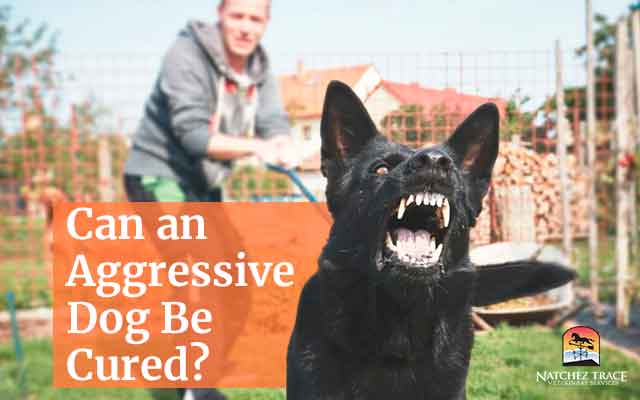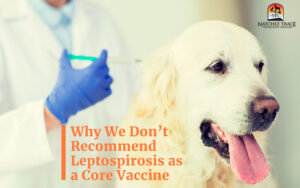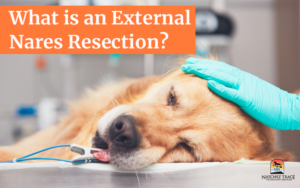Living with an aggressive dog can be challenging, and as a responsible pet owner, you may find yourself wondering if there’s a path to rehabilitation. Here, we ask Dr. Smith: Can an aggressive dog truly be cured?
Truly, that is a tricky question. This is because there are so many variables to be considered.
If you have an aggressive dog, aggression can be managed. However, it’s important you fully understand what you’re dealing with.
Firstly, it’s imperative that you understand canine aggression and where it comes from.
Understanding Canine Aggression: Decoding the Aggressive Dog Mind
 Aggression in dogs is a complex behavior with various contributing factors.
Aggression in dogs is a complex behavior with various contributing factors.
Understanding the root cause is crucial to addressing the issue. Whether it’s fear-based, territorial, possessive, or a result of past trauma, each form of aggression requires a tailored approach for effective intervention.
Identifying Aggression triggers
When addressing aggression, it’s vital to identify triggers that set off the aggressive behavior. Whether it’s certain stimuli, situations, or interactions, recognizing these catalysts is the first step toward creating a targeted behavior modification plan.
- Stimuli Recognition: Observe and identify specific stimuli that consistently provoke aggressive responses in your dog. Stimuli could include certain sounds, sights, or even particular scents.
- Situational Awareness: Take note of situations or environments where aggression tends to occur. Is it during feeding time, when approached by strangers, or in specific locations like the park or home?
- Social Interaction Cues: Pay attention to social interactions, both with humans and other animals. Identify patterns in aggressive behavior during play, sharing space, or encounters with unfamiliar individuals.
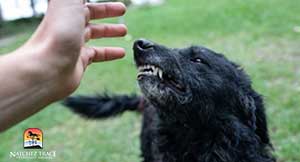 Body Language Analysis: Learn to interpret your dog’s body language. Signs such as raised hackles, a stiff posture, bared teeth, or a lowered tail can indicate discomfort or aggression.
Body Language Analysis: Learn to interpret your dog’s body language. Signs such as raised hackles, a stiff posture, bared teeth, or a lowered tail can indicate discomfort or aggression.- Possessive Behaviors: Note instances of possessiveness, especially around resources like food, toys, or resting spots. Dogs may become aggressive when they feel their possessions are at risk.
- Past Trauma Recognition: Investigate any past traumatic experiences your dog may have had. Previous negative encounters or abuse can contribute to aggressive behavior, and understanding these triggers is essential.
- Medical Factors: Consider potential medical factors that might contribute to aggression. Pain, discomfort, or underlying health issues can influence a dog’s behavior negatively.
- Fear-Based Triggers: Recognize situations that induce fear in your dog. Fear is a common precursor to aggression, and understanding what instills fear is crucial for effective behavior modification.
- Territorial Instincts: Dogs can be territorial, and aggression may arise in response to perceived threats to their territory. Identifying what triggers territorial behavior is vital for managing aggression.
- Consistency in Triggers: Look for patterns and consistency in the identified triggers. Understanding what consistently provokes aggression allows for targeted intervention and behavior modification strategies.
Now that we’ve explored the intricate task of identifying aggression triggers, let’s zoom in on a specific and common form: Food aggression in dogs. Understanding the nuances of this behavior is crucial for implementing targeted strategies to create a harmonious mealtime environment for both you and your furry companion.
Food Aggression in Dogs
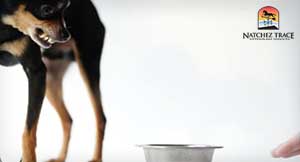 Food aggression in dogs, a behavior rooted in a dog’s instinctual need to protect resources, can pose challenges for pet owners. This type of aggression manifests when a dog perceives a threat to its food, leading to defensive and sometimes harmful reactions.
Food aggression in dogs, a behavior rooted in a dog’s instinctual need to protect resources, can pose challenges for pet owners. This type of aggression manifests when a dog perceives a threat to its food, leading to defensive and sometimes harmful reactions.
Whether your canine friend is growling, snapping, or exhibiting other signs of aggression during meals, addressing food aggression is essential for a peaceful coexistence.
There’s also an Eastern method to help with canine aggression.
Understanding the Root Causes
To effectively address food aggression, it’s crucial to explore the potential causes behind this behavior. Some contributing factors may include:
- Resource Scarcity Anxiety: Dogs with a history of scarcity, such as those rescued from challenging environments, may exhibit heightened food aggression due to past experiences of competition for limited resources.
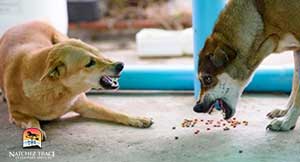 Territorial Instincts: Dogs, by nature, can be territorial about their feeding areas. Food aggression may arise when they feel their territory is being encroached upon during mealtime.
Territorial Instincts: Dogs, by nature, can be territorial about their feeding areas. Food aggression may arise when they feel their territory is being encroached upon during mealtime.- Prior Negative Experiences: Dogs that have experienced negative interactions or aggression during feeding in the past may develop a defensive stance to protect themselves from perceived threats.
- Lack of Socialization: Dogs that haven’t been adequately socialized may struggle with sharing space during mealtime, leading to defensive behaviors.
Signs of Food Aggression
Identifying food aggression involves recognizing behavioral cues. These can include:
- Growling or Snapping: Vocalizations such as growling or snapping when approached during meals.
- Protective Stance: A stiff and defensive posture, with the dog hovering over its food bowl.
- Staring or Showing Teeth: Intense staring or baring of teeth as a warning sign to deter others.
What You Can Do to Curb Food Aggression in Dogs
Addressing food aggression requires a multi-faceted approach. Some effective strategies include:
- Desensitization Techniques: Gradually desensitize the dog to human presence during meals, reinforcing positive associations with the presence of people.
 Use of Positive Reinforcement: Reward calm and non-aggressive behavior with treats or praise during mealtime, encouraging a positive association.
Use of Positive Reinforcement: Reward calm and non-aggressive behavior with treats or praise during mealtime, encouraging a positive association.- Feeding in Controlled Environments: Establish a designated feeding area and create a controlled environment to minimize external stressors during meals.
- Consultation with a Professional: Seek guidance from a professional dog trainer or behaviorist for personalized strategies tailored to your dog’s specific needs.
By understanding the root causes, recognizing behavioral signs, and implementing effective strategies, pet owners can work towards mitigating food aggression in their dogs, fostering a more harmonious mealtime experience for both canine companions and their human counterparts.
Seeking Professional Guidance
Addressing food aggression in dogs often requires the expertise of a professional who can assess the specific nuances of your canine companion’s behavior.
A certified dog trainer or behaviorist brings invaluable insights and experience to the table, guiding you through a structured approach to modifying your dog’s behavior.
The Role of a Professional
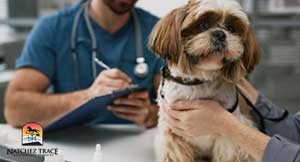 Behavior Assessment: Professionals conduct a thorough assessment of your dog’s behavior, considering factors like history, environment, and triggers specific to food aggression.
Behavior Assessment: Professionals conduct a thorough assessment of your dog’s behavior, considering factors like history, environment, and triggers specific to food aggression.- Tailored Behavior Modification Plan: Based on the assessment, a personalized behavior modification plan is crafted to target the root causes of food aggression. This plan is designed to address your dog’s unique needs and challenges.
- Hands-On Training: Professionals provide hands-on training sessions, demonstrating techniques and coaching you on how to implement them effectively. This direct guidance ensures that both you and your dog understand and adapt to the recommended strategies.
- Continuous Evaluation: Behavior modification is an ongoing process. Professionals typically provide continuous evaluation and adjustments to the plan as needed, ensuring progress and adapting to any changes in your dog’s behavior.
Responsible Pet Ownership
Responsible pet ownership involves understanding and addressing a pet’s behavioral challenges, including aggression in dogs. While a complete “cure” for aggression may not always be feasible, managing and mitigating aggressive behavior is possible with dedication and the right approach.
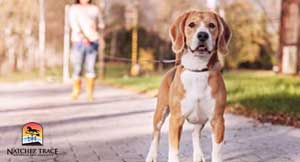 Identifying the root cause of aggression is crucial, as it often stems from fear, territorial behavior, possessiveness, or underlying health issues. Professional guidance from certified behaviorists or trainers is invaluable, aiding in assessments and developing tailored behavior modification plans.
Identifying the root cause of aggression is crucial, as it often stems from fear, territorial behavior, possessiveness, or underlying health issues. Professional guidance from certified behaviorists or trainers is invaluable, aiding in assessments and developing tailored behavior modification plans.
Responsible pet owners play a crucial role in addressing aggression by providing a safe environment, consistent training, and employing positive reinforcement methods. While complete eradication might not be achievable, the goal is to manage and reduce the frequency and intensity of aggressive episodes, ensuring the welfare and safety of your pet and others.
Set up a consult with Dr. Smith for more personalized advice tailored to your specific situation. There may be medication or other options that can help you.
People Also Ask
- What is a moderate level of food aggression? A moderate degree of food aggression is characterized by a dog snapping or lunging when a person or other dog approaches them.
- Should you walk away if your dog is aggressive? You need to make sure you’re safe. If your dog is eating and shows signs of food aggression, for example, don’t confront your dog or attempt to take away his valuable resource. We recommend working with a trainer to make sure you’re training your dog in the safest way possible.
- Is dog training effective if a dog is aggressive? Dog training is very effective and you can learn behavior modification techniques for dog aggression. Dog training should never be done without the help of a professional trainer. You may not be able to cure dog aggression, but a trainer can teach you management techniques.

